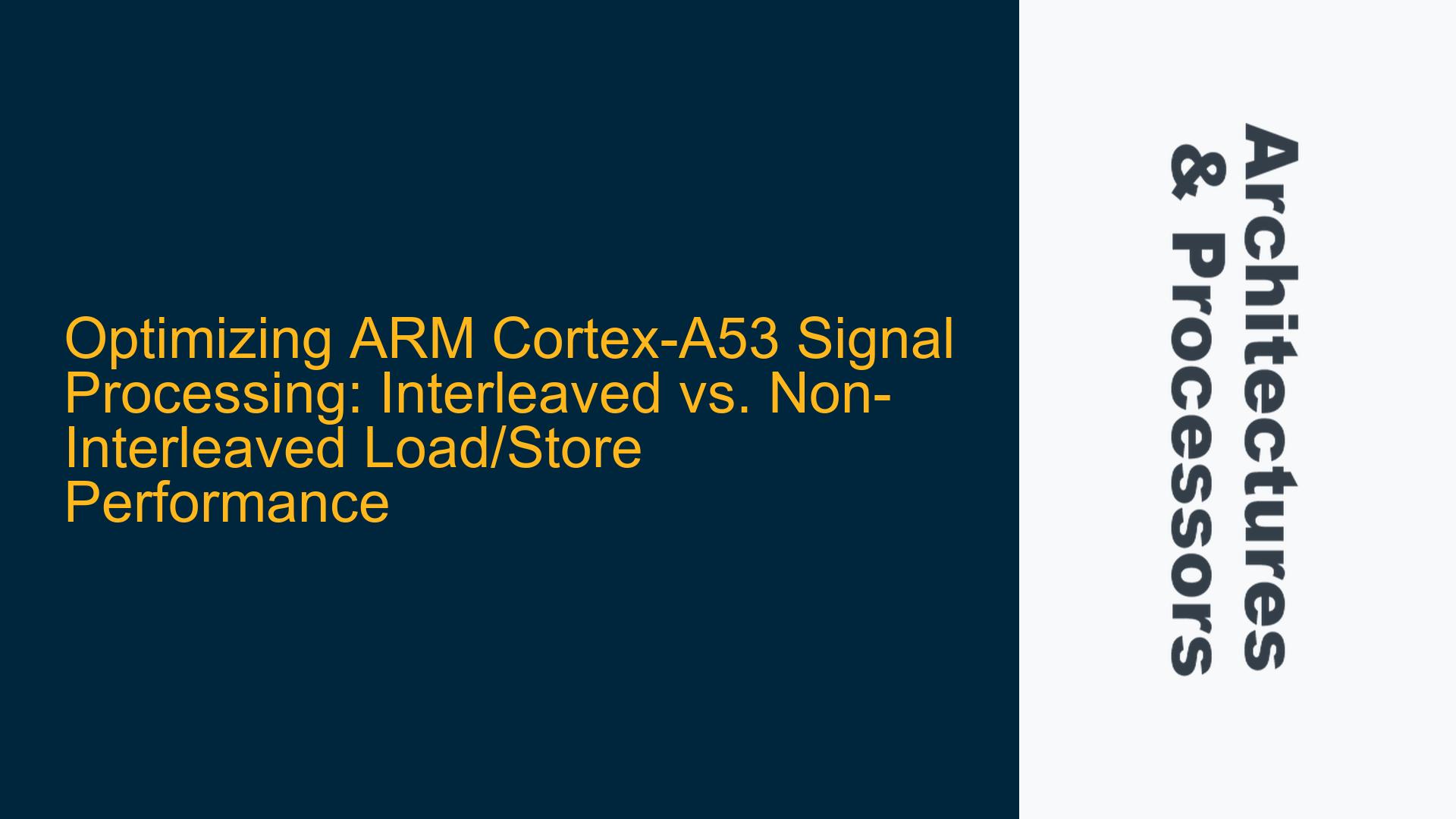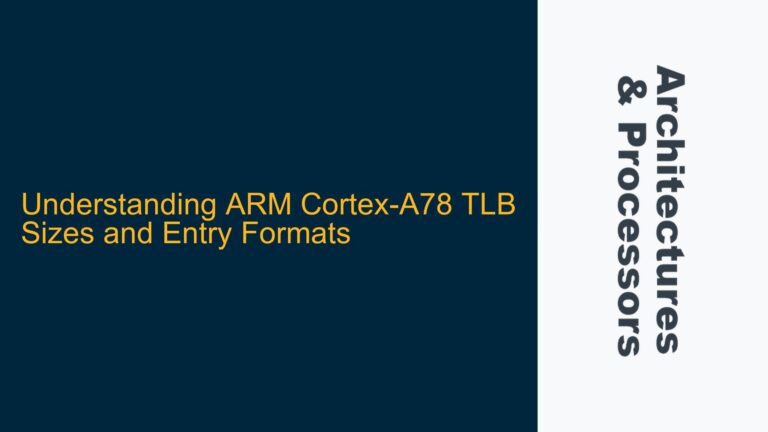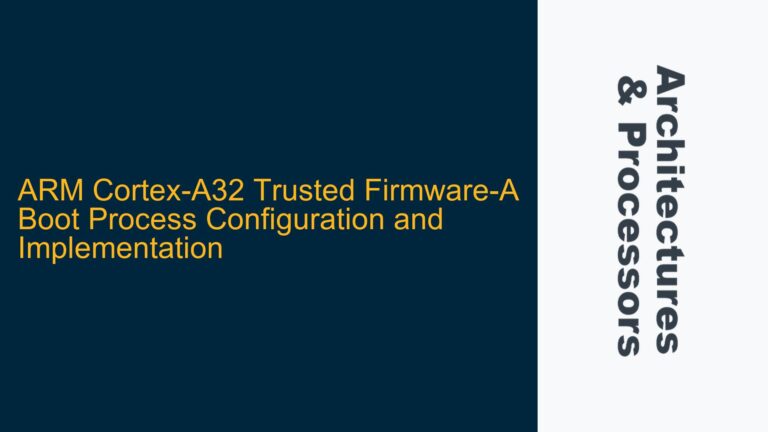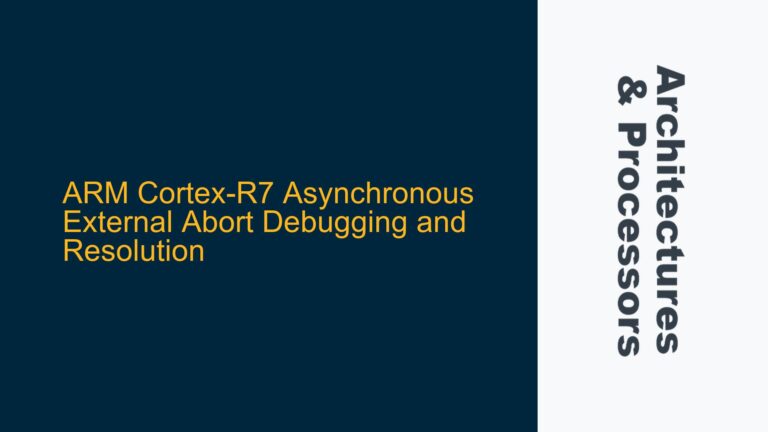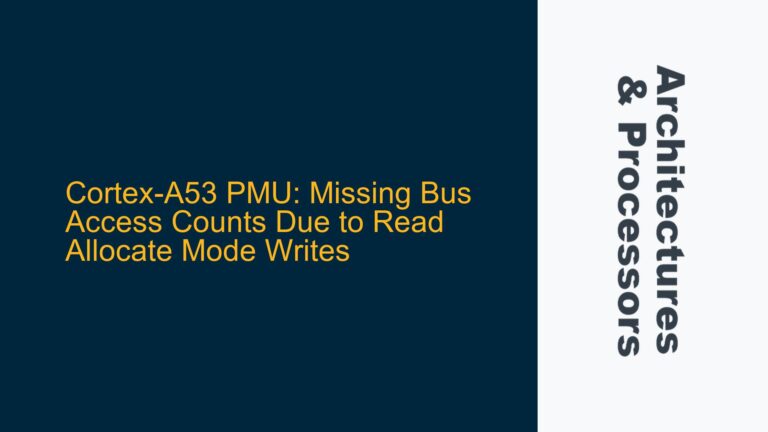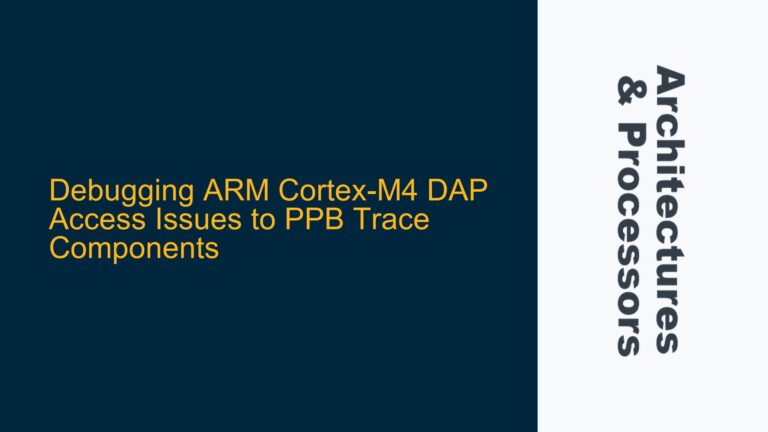ARM Cortex-A53 Signal Processing: Interleaved Load/Store Mnemonics Performance Anomaly
The ARM Cortex-A53 is a widely used processor in embedded systems, particularly for signal processing applications due to its balance of performance and power efficiency. A common optimization technique in such applications involves the use of ARM NEON intrinsics for SIMD (Single Instruction, Multiple Data) operations. Specifically, developers often leverage interleaved load/store mnemonics like vld2q_f32 and vst2q_f32 to handle complex data structures, such as arrays of real and imaginary components in FIR (Finite Impulse Response) filters. However, an unexpected performance anomaly has been observed: using non-interleaved load/store mnemonics (vld1q_f32 and vst1q_f32) with separate real and imaginary vectors, despite requiring twice the number of operations, results in faster execution. This behavior contradicts initial expectations and warrants a detailed investigation.
The core issue revolves around the performance discrepancy between interleaved and non-interleaved load/store operations in ARM Cortex-A53 processors. While interleaved mnemonics like vld2q_f32 and vst2q_f32 simplify code by handling real and imaginary components in a single operation, they appear to underperform compared to non-interleaved mnemonics like vld1q_f32 and vst1q_f32, even when the latter requires additional computational steps. This anomaly raises questions about the underlying hardware-software interactions, particularly in the context of memory access patterns, cache utilization, and pipeline efficiency.
To understand this issue, we must delve into the architectural specifics of the ARM Cortex-A53, including its memory subsystem, NEON unit, and pipeline structure. Additionally, we need to consider the impact of data alignment, cache line utilization, and potential bottlenecks in the memory hierarchy. By analyzing these factors, we can identify the root causes of the performance discrepancy and propose effective solutions to optimize signal processing routines on the Cortex-A53.
Memory Access Patterns and Cache Utilization in ARM Cortex-A53
The performance discrepancy between interleaved and non-interleaved load/store operations can be attributed to several factors related to memory access patterns and cache utilization. The ARM Cortex-A53 features a hierarchical memory system, including L1 and L2 caches, which play a critical role in determining the efficiency of data access. When using interleaved mnemonics like vld2q_f32, the processor loads or stores pairs of real and imaginary components in a single operation. While this approach simplifies code, it can lead to suboptimal cache utilization due to the interleaved nature of the data.
In contrast, non-interleaved mnemonics like vld1q_f32 and vst1q_f32 operate on contiguous blocks of memory, which can result in more efficient cache line utilization. When loading or storing real and imaginary components separately, the processor accesses consecutive memory locations, allowing for better spatial locality and reduced cache misses. This improved cache utilization can offset the additional computational overhead of handling real and imaginary components separately, leading to faster overall execution.
Another factor to consider is the alignment of data in memory. The ARM Cortex-A53 benefits from aligned memory accesses, which can reduce the number of memory transactions and improve cache efficiency. Non-interleaved load/store operations are more likely to align with cache line boundaries, further enhancing performance. In contrast, interleaved operations may result in misaligned accesses, particularly when dealing with complex data structures, leading to increased memory latency and reduced throughput.
The impact of memory access patterns on performance is further compounded by the ARM Cortex-A53’s pipeline structure. The processor employs an in-order execution pipeline, which is sensitive to memory latency. When using interleaved mnemonics, the pipeline may stall more frequently due to cache misses or misaligned accesses, reducing overall throughput. Non-interleaved operations, with their improved cache utilization and alignment, can mitigate these pipeline stalls, resulting in faster execution.
Pipeline Efficiency and NEON Unit Utilization
The ARM Cortex-A53’s pipeline efficiency and NEON unit utilization are critical factors in understanding the performance discrepancy between interleaved and non-interleaved load/store operations. The NEON unit in the Cortex-A53 is designed to handle SIMD operations efficiently, but its performance is heavily influenced by the way data is loaded and stored. Interleaved mnemonics like vld2q_f32 and vst2q_f32 introduce additional complexity in the NEON unit’s data path, as they require the unit to handle interleaved real and imaginary components simultaneously.
This added complexity can lead to inefficiencies in the NEON unit’s pipeline, particularly when dealing with large datasets. The NEON unit may experience increased contention for resources, such as registers and data paths, when processing interleaved data. This contention can result in pipeline stalls and reduced throughput, negating the benefits of using a single instruction to handle both real and imaginary components.
In contrast, non-interleaved mnemonics like vld1q_f32 and vst1q_f32 simplify the NEON unit’s data path by operating on contiguous blocks of memory. This simplification allows the NEON unit to process data more efficiently, with fewer pipeline stalls and better utilization of available resources. While this approach requires additional instructions to handle real and imaginary components separately, the overall impact on pipeline efficiency can result in faster execution.
The ARM Cortex-A53’s in-order execution pipeline further exacerbates the performance discrepancy. In-order pipelines are inherently less tolerant of stalls and resource contention, as they cannot reorder instructions to hide latency. When using interleaved mnemonics, the pipeline may stall more frequently due to the increased complexity and resource contention in the NEON unit. Non-interleaved operations, with their simpler data path and reduced contention, can maintain better pipeline throughput, leading to improved performance.
Implementing Optimized Load/Store Strategies for ARM Cortex-A53
To address the performance discrepancy between interleaved and non-interleaved load/store operations, developers can implement several optimization strategies tailored to the ARM Cortex-A53’s architecture. These strategies focus on improving cache utilization, aligning data accesses, and maximizing pipeline efficiency.
One effective approach is to restructure data layouts to favor non-interleaved load/store operations. By storing real and imaginary components in separate, contiguous memory blocks, developers can improve cache line utilization and reduce the likelihood of misaligned accesses. This restructuring can be achieved through careful data organization and alignment directives, ensuring that memory accesses align with cache line boundaries.
Another optimization strategy involves leveraging ARM Cortex-A53’s prefetching capabilities. By prefetching data into the cache before it is needed, developers can reduce memory latency and improve pipeline efficiency. Prefetching is particularly effective when combined with non-interleaved load/store operations, as it allows the processor to anticipate and preload contiguous memory blocks, further enhancing cache utilization.
Developers can also optimize NEON unit utilization by minimizing resource contention and pipeline stalls. This can be achieved by carefully scheduling load/store operations to avoid overlapping accesses and by using non-interleaved mnemonics to simplify the NEON unit’s data path. Additionally, developers can use ARM’s performance monitoring tools to identify and address bottlenecks in the pipeline, ensuring that the NEON unit operates at peak efficiency.
Finally, developers should consider the impact of compiler optimizations on load/store performance. Modern compilers, such as GCC and Clang, offer a range of optimization flags and intrinsics that can improve the efficiency of NEON operations. By enabling these optimizations and fine-tuning compiler settings, developers can further enhance the performance of signal processing routines on the ARM Cortex-A53.
In conclusion, the performance discrepancy between interleaved and non-interleaved load/store operations on the ARM Cortex-A53 is a complex issue rooted in memory access patterns, cache utilization, and pipeline efficiency. By understanding these factors and implementing targeted optimization strategies, developers can achieve significant performance improvements in signal processing applications. The key lies in aligning data accesses, optimizing NEON unit utilization, and leveraging the Cortex-A53’s architectural features to their fullest potential.
